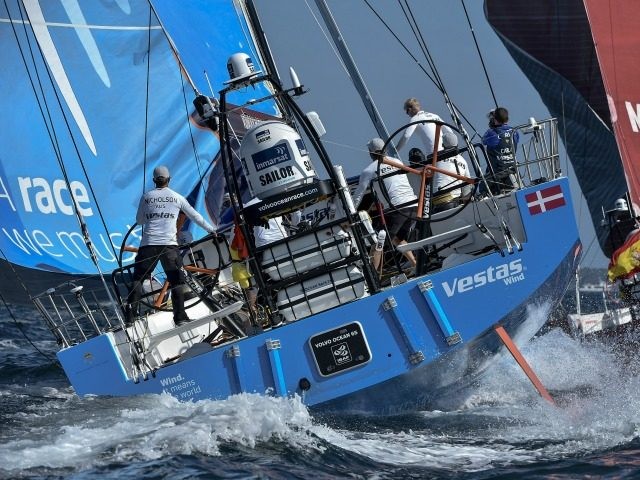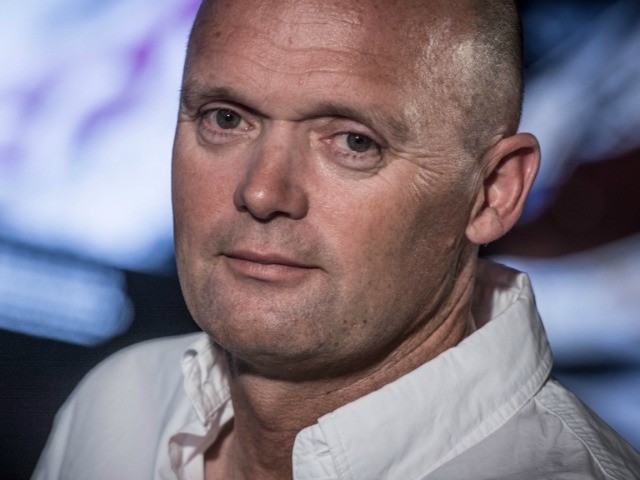The next edition of the Volvo Ocean Race, the world’s toughest sailing challenge that takes a fleet of racing yachts on a course that circles the globe, sets sail in a little under 12 months from Alicante, Spain. The route includes a U.S. stopover at Newport, Rhode Island, as sailors try to prove who is the fastest — and toughest — in this unique sporting challenge.
The 45,000 nautical-mile contest began in 1973 as the Whitbread Round the World Race with a mixed fleet of privately-funded yachts of all sizes and crews of distinctly amateur status.
For the 13th edition, starting in early October 2017, the teams will compete in the Volvo Ocean 65 one-design, a class of identical boats that cannot be modified in any way. The seven yachts built for 2014-15 will be on the track again, challenged by a number of new-build entries built dependent on team requirements.
All entrants will be the same to ensure there will be no advantage to be gained in racing a first or second-generation boat.
To get some idea of how this race continues to evolve, Breitbart Sports conducted this Q&A with Mark Turner, CEO of the Volvo Ocean Race, to see what lies ahead:
1. It’s exactly one year until the start of the 2017-18 race, what is your focus at the moment?
We’re putting a lot of work into getting the details right for the 2017-18 edition — from a revamped scoring system, to new rules designed to get more women in the race and the unprecedented refit program we’re putting the boats through in Lisbon — but a large chunk of my time is also spent on preparing for 2020 and beyond. So at the same time as we’ve been making 10 major announcements in the space of 10 days, we’re also looking at the fundamentals of the race platform, and how to inspire and engage more and more fans, sailors and sponsors in the future. It’s a busy time.
2. You’ve announced a new race route that goes back through the traditional Southern Ocean but also visits Hong Kong for the first time? How did the Race choose the new 2017-18 route?
We wanted more action, more tough miles, more speed and more world class host cities — and Hong Kong certainly qualifies there. Then on to Guangzhou, China — the first time the Race will visit one of just four, premium Tier 1 cities in the country.
The route we’ve chosen takes in something like 12,500 nautical miles in the Southern Ocean – about three times as much as in previous editions. The sea around the antarctic is a big part of the race’s heritage and we feel spending so much more time there, amid huge waves and heavy winds, takes us back to roots of the race in the old Whitbread days.
In terms of stopovers, 2017-18 will see us visit some of the world’s most famous sailing cities — places like Cape Town, Auckland, and Newport, Rhode Island — and to add Hong Kong to the list is really exciting.
3. You are four months into your tenure as the new Volvo Ocean Race CEO, what are some of the new initiatives you hope to implement?
We’ve already started. In the last two weeks we’ve made 10 key announcements across the rules of the race, onshore team base facilities, on-water activation, building a new boat and an intense pre-race qualification schedule. These evolutions take in the sporting side, the B2B experience and the overall development of the race for the future.
For example, we’ve introduced a rule that will provide a major encouragement for teams to include the world’s best professional female offshore sailors and give them a chance to compete on equal terms.
To be honest, I wish we didn’t have to include a rule of this sort, but it will ensure we build on the momentum of the last edition, when we had the first all-female team in over a decade and they won one of the offshore legs, while finishing on the podium in the overall in-shore series. That was an amazing effort.
And we’re looking at ways to open up the competition in an era of incredibly close One Design racing. The first step has been to revolutionize the scoring system for 2017-18 to encourage strategic risk-taking by the teams. But we’re also considering other things like blackouts in terms of positions, so teams can go into stealth mode, and in terms of weather data provided, so that there’s less incentive to play the percentages and stick with the pack.
4. What kind of visibility and return on investment are team sponsors seeing. In 2011-2012 French winner Groupama had massive visibility but didn’t return to the race. How about any teams from the last race?
In terms of return on investment and return on objectives for sponsors, the Volvo Ocean Race is very competitive — and it’s much more than just a platform for publicity or brand awareness. For companies who have been involved with us, the race has proved itself time and again as a Business Transformation Tool, able to help companies adapt to times of change. That might be in aligning a large, global workforce around a single project to help with company pride and engagement, or establishing a company culture worldwide across different businesses or helping a business expand in new global markets.
5. What does it take to become Volvo Ocean Race champion?
Excellent teamwork and strong leadership through tough high and low cycles. It is a long, tough race and for a skipper to see a team through to the top spot on the podium at the end is no easy mission. It took Ian Walker, overall winner in the last race, three attempts. It took Sir Peter Blake, five goes and we have one of his quotes emblazoned on a wall at our Alicante HQ: ‘There’s nothing like it. It gets in your blood and you can’t get rid of it.’ I think that is typical reaction of many of sailors who compete in the race — it is the pinnacle in offshore racing, and many of the world’s best sailors become obsessed by it — and dedicate years trying to win it.
6. Given the huge distances involved in the race and the time spent at sea, what digital innovations can spectators ashore expect to see that will help track the yachts’ progress during their trip? Anything new we can expect?
Our focus is very much on digital for the next edition and we can promise fans we’ll be telling more of the raw story of the race — getting more video, data and picture onto their screens faster than ever. We’re able to do that because of our Onboard Reporter program, which puts an embedded multimedia journalist on every boat throughout every leg. There’s no other major global sport that does that, and in 2017-18 we’ll be taking it to the next level.
We’ll also be delivering more updates direct from the athletes themselves. This week we confirmed a rule change that will allow the sailors to send social media updates direct from the oceans to their own platforms. The Race has strictly prohibited onboard internet access in the past to avoid any chance of outside interference, so that’s a big deal for us. We’re developing a bespoke ‘crew communicator’ platform in-house that will allow them to transmit one-way updates. This means the athletes can share with their fans direct from the race track and that’s pretty cool.


COMMENTS
Please let us know if you're having issues with commenting.